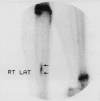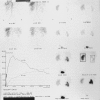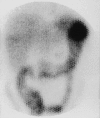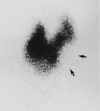The role of nuclear medicine in clinical investigation
- PMID: 9552956
- PMCID: PMC1112941
- DOI: 10.1136/bmj.316.7138.1140
The role of nuclear medicine in clinical investigation
Figures













References
-
- Pennell DJ, Prvulovich EM. Clinician’s guide to nuclear medicine: nuclear cardiology. Hatfield: Impact Healthcare; 1995.
-
- McKillop JH, Fogelman I. Clinician’s guide to nuclear medicine: benign and malignant bone disease. London: Churchill Livingstone; 1991.
-
- Testa HJ, Prescott MC. Clinician’s guide to nuclear medicine: nephrourology. Hatfield: Impact Healthcare; 1996.
-
- Harding LK, Robinson PJA. Clinician’s guide to nuclear medicine: gastroenterology. London: Churchill Livingstone; 1990.
-
- Costa DC, Ell PJ. Clinician’s guide to nuclear medicine: blood flow in neurology and psychiatry. London: Churchill Livingstone; 1991.
Publication types
MeSH terms
Substances
LinkOut - more resources
Full Text Sources
